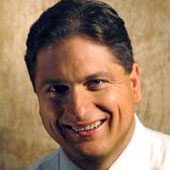Australia: Behind the Scenes at Beijing
What behind-the-scenes influence has Australia had at the Beijing Olympics?
August 22, 2008
As I move around a noisy, smoggy but very excited city, I notice Australia everywhere. Of course, there are the highly visible symbols of Australia, such as the water cube designed by Australian architects PTW.
Their story is well known. PTW won the Beijing contract after Austrade entered them in a Beijing Olympics competition — bidding for design for the main arenas and the Olympic Village — on the back of their award-winning design for the Aquatic Center Homebush at the Sydney Games in 2000.
In fact, Australian designers and architects in general have done very well, with at least six major Olympic arenas being Australian-designed and many Australians acting as consultants to those designed locally by their Chinese counterparts.
Outside Beijing too, Australian architects have designed the sailing base in Qiangdao, the stadium in Tianjin and the Hong Kong Equestrian Center.
Australia has also made a major contribution to high-profile symbols of the Olympic Games.
For example, BHP Billiton has provided the ores in the medals, Bluescope has provided materials for the Olympic Torch and the torch relay was organized by an Australian company, Maxxam International.
However, this is just the tip of the iceberg. As well as the very visible symbols of Australia’s contribution to this Olympic Games, behind the scenes, Australian exporters — large and small — have been helping China to put on the greatest show on earth.
For example, the lighting control systems in the hotels and the Olympic venues have been manufactured by a Sydney company, Dynalite, the smoke alarm systems by Xtralis, the artificial turf in the hockey field is engineered by Sports Technology International — and Argus has provided the mobile phone antennas in another Olympic landmark, the “bird’s nest” stadium.
Getting around the city is always difficult at Olympic time. However, the Beijing Olympic organizers were keen to learn from the Sydney 2000 team in terms of logistics.
For example, the Australian company SmartTrans has provided GPS tracking technology to optimize travel routes around Beijing to the different Olympic venues.
The logistics operations stemmed from Chinese authorities’ desire to keep down pollution levels and make Beijing a “green” games just like Sydney.
In order to help Beijing meet its environmental aspirations, the Melbourne-based company Biograde is helping with plastics recycling. Biograde is one of a number of “green” exporters coming from Australia to China to help in areas of clean energy and recycling.
And finally, anybody who remembers the very successful volunteer concept at the Sydney Olympic Games in 2000 will not be surprised that, as an example of “knowledge exports,” TAFE Global has been in Beijing in the lead-up to help China develop its own volunteer support for the Games.
And believe me, the Beijing Olympic volunteers are there in force — from the moment you step out of the plane in Beijing’s brand new space-age international airport.
In fact, the volunteers are emblematic of all the service exports provided by Australia to China. Telstra provides telecommunications strategy advice, Macquarie Bank provides financial services advice, and Great Big Events and Major Event Planning helps with event management and sports marketing.
On top of that, many individual Australians have been working as consultants to BOCOG (and to London), the most prominent being Sandy Hollway, who has been assisting both Beijing and the International Olympic Committee in using the “legacy” of the Sydney Games to boost Beijing.
In conclusion, while China wants Beijing to be the “green” games, in some ways, based on what I have seen of Australia here, we could call them the “green and gold” games — a fitting symbol of the economic potential of Australia and China working together across a whole range of industries.
Takeaways
Based of what I have seen of Australia in Beijing, we could call them the "green and gold" games.
As I move around a noisy, smoggy but very excited Beijing, I notice Australia everywhere.
As well as the very visible symbols of Australia's contribution to this Olympic Games, behind the scenes, Australian exporters have been helping China to put on the greatest show on earth.
Read previous
Chinese Lessons
August 21, 2008
